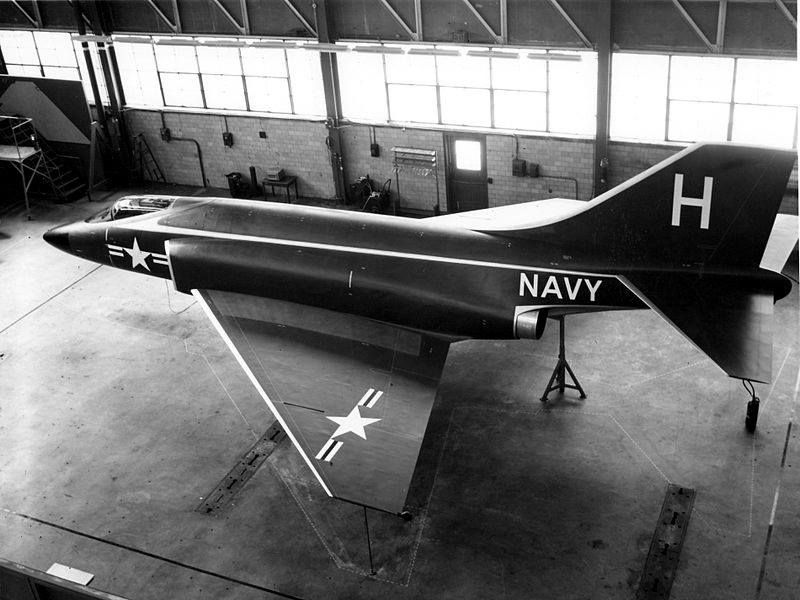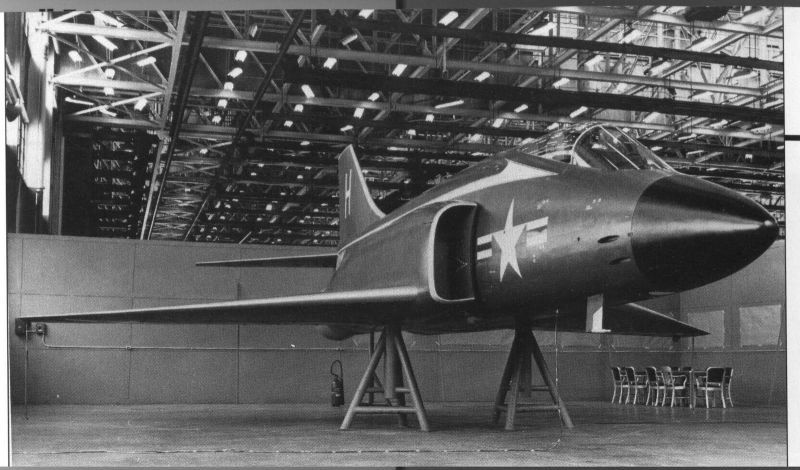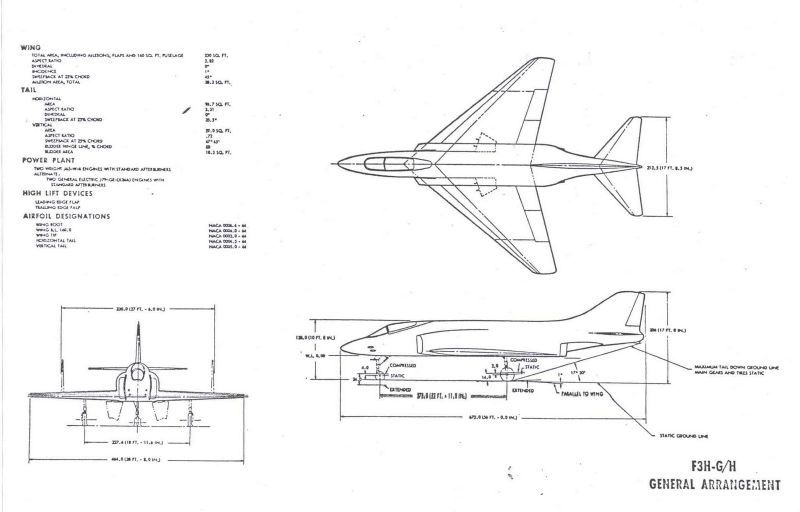Actually -
The design of what was eventually to emerge as the McDonnell F-4 Phantom began in August of 1953. The McDonnell design team was headed by Herman Barkley. Initially, the goal of the team was to extend the production life of the F3H Demon single-seat carrier-based fighter by boosting its performance and improving its versatility. Tis series of in-house designs were also known as the Model 98 series by the company) .....
On September 19, 1953, McDonnell submitted its Model 98B project to the Navy's Bureau of Aeronautics (BuAer) in the form of an unsolicited proposal.
.....
Although the Navy was favorably impressed by the Model 98B proposal, the Grumman XF9F-9 Tiger and the Vought XF8U-1 Crusader which had been ordered respectively in April and June of 1953 appeared to satisfy all the Navy's immediate requirements for supersonic fighters. Nevertheless, the Navy encouraged McDonnell to rework its design into a single-seat, twin-engined all-weather attack aircraft to compete against designs being worked on by Grumman and North American.
McDonnell submitted a formal development proposal for the F3H-G/H to the Navy in August of 1954. The Navy responded in October of 1954 by issuing a letter of intent for two prototypes and a static test aircraft. The Navy assigned the designation AH-1 to the project, reflecting its intended ground attack mission. The AH-1 was to have no less then eleven weapons pylons. Armament was to consist of four 20-mm cannon.
On December 14, 1954, the multirole mission of the aircraft was formally abandoned by the Navy, and McDonnell was requested to rework the proposal as an all-weather interceptor. McDonnell was instructed to remove the cannon and all hardpoints except for a centerline pylon for a 600-US gallon fuel tank. In addition, troughs were to be added for four Raytheon Sparrow semi-active radar homing air-to-air missiles. A Raytheon-designed APQ-50 radar was added, this installation being essentially that installed in the F3H-2 Demon. A second seat was added to accommodate a radar operator.
Yes - the first USN interest in, and specification for, what eventually became the F-4 Phantom II was as a competitor to the Grumman A2F (A-6) Intruder and A3J (A-5) Vigilante!
FGH-3 mockup:


